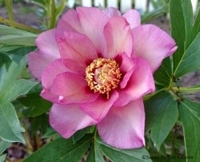
- August is the month to order peony roots for September planting. Peonies should be in the ground about a month before the average first frost date.
- Colorful plastic golf tees can be stuck in the ground to mark the location of dormant plants such as spring flowering bulbs or perennials.
- Water plants deeply once or twice a week depending on the heat and humidity.
- Check the water needs of hanging baskets once or twice daily. Wind and sun dry them out quicker than other containers.
- Fertilize container plantings and hanging baskets if they look yellow with a ½ strength dose of a balanced liquid fertilizer.
- Continue to deadhead annuals and perennials to encourage continuous bloom.
- Scout for C-shaped notches on the edges of the leaves of your perennials such as dahlias, roses, basil or coleus that are caused by Asiatic beetle feeding.
- Fertilize perennials with a 5-10-5 or 5-10-10 product to encourage continued blooming.
- Back to top of page

- The Big Bug Hunt is an international research project to track when and how garden bugs spread. The Big Bug Hunt has already identified patterns in the way some major pests spread. Additional reports will improve accuracy and speed development of the pest-alert system.
- Sign up for gardening classes, workshops, or seminars offered by many garden centers, your town recreation office, or through the UConn Master Gardener Program.
- Back to top of page
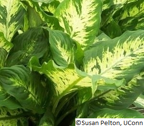
- Houseplants can dry out quicker in the heat and extra sunlight of summer. Check them frequently to evaluate their moisture needs.
- Back to top of page
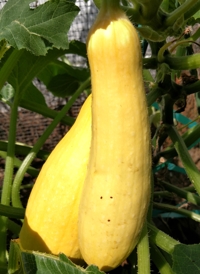
- Pick summer squash and zucchini every day or two to keep the plants producing.
- Keep an eye out for insect, slug, and snail damage throughout the garden. Use the controls in our fact sheet Snails and Slugs.
- Sketch out where you planted various vegetables in your garden so that next spring when you plant, you can rotate your crops to help prevent disease.
- Remove old plants that have stopped producing to eliminate a shelter for insects and disease organisms. Replant sites with chard, quick maturing beans or cucumbers, leafy greens etc.
- The best time to gather herbs and flowers for drying and preserving is during the midmorning hours, just after the dew has dried but before the sun causes them to wilt. Tie herbs in clusters with the stems attached and hang upside down to dry or dry in the microwave.
- Even though tomatoes continue to ripen after picking, fruits develop greatest flavor when allowed to ripen on plants. The exception is cherry tomatoes since many varieties are prone to splitting. Pick any almost ripe ones before a heavy rain.
- Water plants deeply once or twice a week depending on the heat and humidity.
- Scout for Late Blight on tomato and potato plants. Remove and destroy infected plants.
- Back to top of page
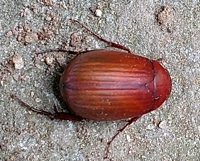
- Scout for C-shaped notches on the edges of the leaves of your perennials such as dahlias, roses, basil or coleus that are caused by Asiatic garden beetle feeding.
- Keep an eye out for insect, slug, and snail damage throughout the garden use the controls in our fact sheet Snails and Slugs.
- Pick up, bag, and trash (do not compost) any dropped apples that show signs of apple maggot.
- Control mosquitoes by eliminating all sources of stagnant water. Clean bird baths and pet’s outdoor dishes often.
- Hose down or power wash spongy moth caterpillar frass (droppings) stains on furniture cushions, decks, and driveways.
- Back to top of page

Fruits
- Renovate strawberry beds by mowing to a height of 1 ½ inches, thinning plants and side-dressing with a balanced fertilizer.
- Pick up, bag, and trash (do not compost) any dropped apples that show signs of apple maggot.
- To reduce the number of pests on your fruit trees for the coming year practice good sanitation by removing and destroying all fallen fruit. Do not compost it.
- Think about what fruits trees you might like to add to your yard this fall. Some suggestions for native plants may be found at Trees and Shrubs: Suggested Native Species for Pollinators.
Lawns
- Do not add weeds with mature seed heads to the compost pile. Many weed seeds can remain viable and germinate next year when the compost is used.
- Reseeding the lawn in late August gives the new grass two growing periods (fall and spring) before the heat of summer. Be sure to keep the seed moist until germination.
Trees and Shrubs
- Stop pruning evergreen trees and shrubs to avoid promoting new growth that may not harden off before first frost.
- Fruiting plants such as winterberry, holly, and firethorn need regular watering during dry spells to ensure that berries mature and don't drop off.
- Don’t forget that trees and shrubs require water during extended dry periods.
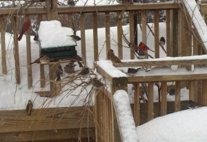
- Check family members and pets for ticks after being outside, especially when in tall grass or wooded areas. If necessary send ticks to the Connecticut Veterinary Medical Diagnostic Laboratory for testing.
- Back to top of page
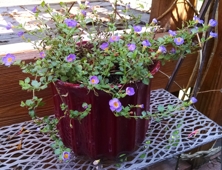
- Control mosquitoes by eliminating all sources of stagnant water. Clean bird baths and pet’s outdoor dishes often.
- Leaky garden hoses and fittings can waste water. Check hoses while they are under full pressure and make repairs.
- Back to top of page
Despite good cultural practices, pests and diseases at times may appear. Chemical control should be used only after all other methods have failed.
For pesticide information please call UConn Home and Garden Education Center weekdays, in Connecticut call toll free 877-486-6271. Out of state call 860-486-6271
Revised by the UConn Home and Garden Education Center 2022
Issued in furtherance of Cooperative Extension work, Acts of May 8 and June 30, 1914, in cooperation with the U.S. Department of Agriculture, the Dean of the College, Cooperative Extension System, University of Connecticut, Storrs. The Connecticut Cooperative Extension System is an equal opportunity employer and program provider. To file a complaint of discrimination, write USDA, Director, Office of Civil Rights, Room 326-W, Whitten Building, Stop Code 9410, 1400 Independence Avenue, SW, Washington, DC 20250-9410 or call (202) 720-5964.